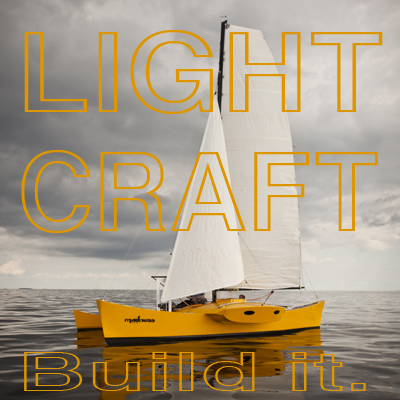The Crab Claw Comeback
GALLERY | Click images to enlarge
The crab claw as an ideal wind-electric hybrid yacht rig
Way back around the turn of the century, there was a lot of excitement about the potential of the native Pacific island canoe rig, often called the “crab claw” sail, so called because the plan form resembles the claw of a crab. The rig has some serious advantages, see here, but also some serious limitations, the primary one being that it is not as weatherly as a modern sloop. Experimenting eventually died off and the crab claw was once again consigned to the scrap heap of ideas that are “good in theory, but not so good in practice”.
However, to paraphrase Mark Twain, the rumors of the crab claw’s demise have been greatly exaggerated. The crab claw, or “delta wing sail” is the wind engine chosen by the Italian startup Seagate Sailing.
Seagate has developed two new patented technologies to convert first wind into driving force through an automatic, collapsible, efficient delta wing sail and next to covert driving force into fuel saving through a cruise control that allow to lift the foot from the accelerator without losing speed.
Seagate envisions both commercial and recreational applications for their delta sails, from sail assisted tankers and container ships to hybrid wind-electric yachts. What makes the crab claw a good choice for a wind-assisted power vessel?
- ROI. The rig is inexpensive, and built to stay that way.
- Structurally efficient.
- Low center of effort.
- Powerful when reaching and running.
- Folds flat to the deck when not in use - no windage or air draft.
The main disadvantage of the crab claw - lack of weatherliness - is not an issue for a motor sailor because it is more efficient and faster to power directly into the wind than to tack back and forth against it.
Numbered among founder Marcello Segato’s core team is one Andy Claughton, who is the director of the Wolfson Unit at Britain’s Southampton University.
This is where the world’s foremost boat and rig designers come to have their ideas tested, and nearly 30 years ago it tested a variety of modern and traditional rigs for C.A. Marchaj’s groundbreaking book Sailing Theory and Practice. No prizes for guessing which rig proved the most aerodynamically efficient when reaching and running—yes, the crab claw. - Peter Nielsen
The Winelec 2.0 motor sailor is typical Eurotrash fare and it will be interesting to see if the customers who can afford it will care about saving a few Euros in gas or if they will opt for the more usual Ferretti. That said, the concept has enormous potential. Why not slim it down to a hybrid pocket cruiser? Watch this space for more on wind-electric hybrids for the rest of us.


“The main disadvantage of the crab claw - lack of weatherliness - is not an issue for a motor sailor because it is more efficient and faster to power directly into the wind than to tack back and forth against it.”
What do we mean here by “efficient”? Since one uses fuel and other uses no fuel. How can it be efficient to use fuel when there is an alternative to do the same thing without fuel?